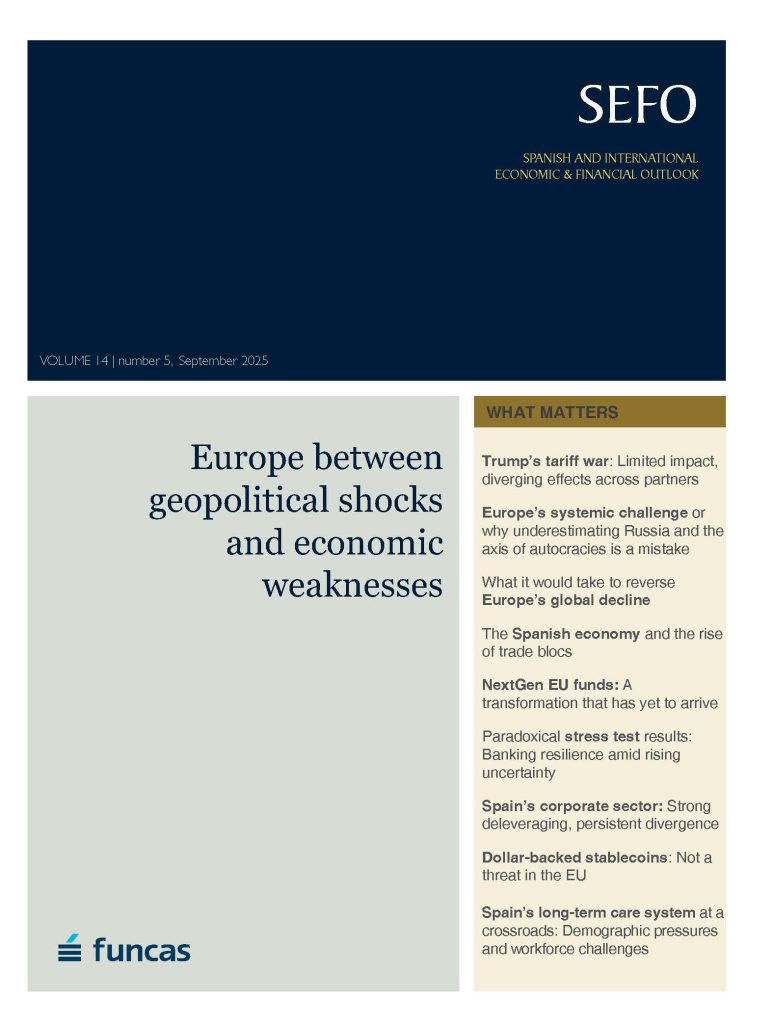Europe between geopolitical shocks and economic weaknesses
Fecha: septiembre 2025
SEFO, Spanish and International Economic & Financial Outlook, V. 14 N.º 5 (September 2025)
Index
Despite headline-grabbing tariff announcements, the average burden on most U.S. trading partners remains moderate. While China has been hit hard, the EU and other allies have faced relatively modest increases.
Europe’s assumptions about Russia’s weakness and the limits of autocracies have been upended by Moscow’s resilience in war and economic mobilization. Meeting this challenge requires a bolder strategy, with higher defence spending, modern technologies, and deeper European cooperation.
Europe’s lacklustre economic growth reflects deep-seated structural weaknesses, from fragmented financial markets to chronic underinvestment and low productivity. Without further fiscal and capital markets integration, the bloc remains exposed to external shocks and the risk of a managed decline.
The global economy is increasingly shaped by geopolitical blocs, reflecting the weakening of multilateralism. Spain has been resilient to this disruption thanks to its strong competitive position with other EU countries; but, this hides structural export weaknesses with non-EU regions, notably the U.S. and China, underscoring the need to revitalize the single market and boost investment..
Spain has led the EU in securing and allocating recovery funds, but actual disbursement and material execution remain slow. Heavy reliance on current expenditure and fragmented projects risk undermining the program’s structural impact.
The 2025 stress tests by the Fed and EBA revealed strongerthan-expected resilience, despite harsher adverse scenarios. Improved profitability and net interest margins drove smaller capital depletion, challenging conventional expectations.
Spanish corporations have undergone a sharp deleveraging in the last decade, leaving aggregate indebtedness below the EU and eurozone averages. However, behind this aggregate figure lie significant differences by company size, sector, and region.
Despite rapid growth in terms of capitalization and rising cross-border flows, dollar-backed stablecoins face significant barriers in the Euro Area. Exchange rate and issuer risks, coupled with strict EU regulation, private initiatives and the digital euro project, limit their potential to disrupt European financial systems; however, regulators and traditional financial services providers should continue to pay close attention to the fast development of decentralized finance and key assets like stablecoins.
Spain’s long-term care system faces a dual transformation – rapid population ageing and a shift toward personalized, deinstitutionalized care. Meeting these challenges will require doubling the workforce by 2030 and addressing precarious labor conditions.

